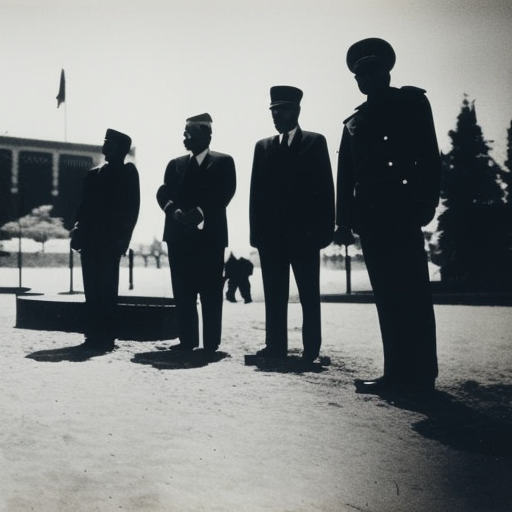Tehran Conference: Allies Discuss Strategy during World War II
The Tehran Conference, held from November 28 to December 1, 1943, was a meeting between the leaders of the Allied powers during World War II. The conference took place in Tehran, the capital of Iran, and was attended by British Prime Minister Winston Churchill, Soviet Premier Joseph Stalin, and US President Franklin D. Roosevelt. The primary objective of the conference was to discuss and coordinate the military strategy of the Allies against the Axis powers.
Context: World War II
At the time of the Tehran Conference, World War II was in full swing. The Allies, consisting of the United States, the Soviet Union, and the United Kingdom, were engaged in a bitter struggle against the Axis powers, led by Germany, Italy, and Japan. The conference was held at a crucial stage of the war, with the Allies gaining momentum and looking for ways to further their success.
Main Discussions and Outcomes
1. Opening discussions and military strategy: The conference began with discussions on military strategy. The Allies agreed on the importance of launching an invasion of Western Europe to relieve pressure on the Soviet Union, which was bearing the brunt of the fighting against Germany on the Eastern Front. The invasion, codenamed Operation Overlord, would later take place in June 1944 as the D-Day landings.
2. Opening of a second front: One of the key outcomes of the Tehran Conference was the commitment by the Allies to open a second front in Western Europe. Stalin had long been pressing for this, and the conference marked a turning point in the Allies’ decision-making. The leaders agreed to launch the invasion in the spring of 1944, which would eventually lead to the liberation of France and the defeat of Nazi Germany.
3. Soviet commitment to the war against Japan: Another significant outcome of the conference was Stalin’s agreement to join the war against Japan once Germany was defeated. This commitment was crucial for the Allies, as it ensured that the Soviet Union would divert its forces to the Pacific theater, putting additional pressure on Japan.
4. Post-war Europe: The leaders also discussed the future of Europe after the war. They agreed on the need for the establishment of an international organization to maintain peace and prevent future conflicts. This laid the groundwork for the creation of the United Nations, which would be officially established in 1945.
Significance of the Tehran Conference
The Tehran Conference was a pivotal moment in World War II and had several significant outcomes. It solidified the alliance between the United States, the Soviet Union, and the United Kingdom, demonstrating their commitment to working together to defeat the Axis powers. The conference also marked a turning point in the war, with the decision to open a second front in Western Europe, which ultimately led to the downfall of Nazi Germany.
Furthermore, the conference laid the foundation for post-war cooperation and the establishment of the United Nations. The discussions on the future of Europe and the need for an international organization to maintain peace set the stage for the creation of the UN, which would play a crucial role in global affairs in the decades to come.
In conclusion, the Tehran Conference was a significant event during World War II. It brought together the leaders of the Allies to discuss military strategy, the opening of a second front, and the future of Europe. The decisions made at the conference had far-reaching consequences, leading to the liberation of Europe and the establishment of the United Nations.












